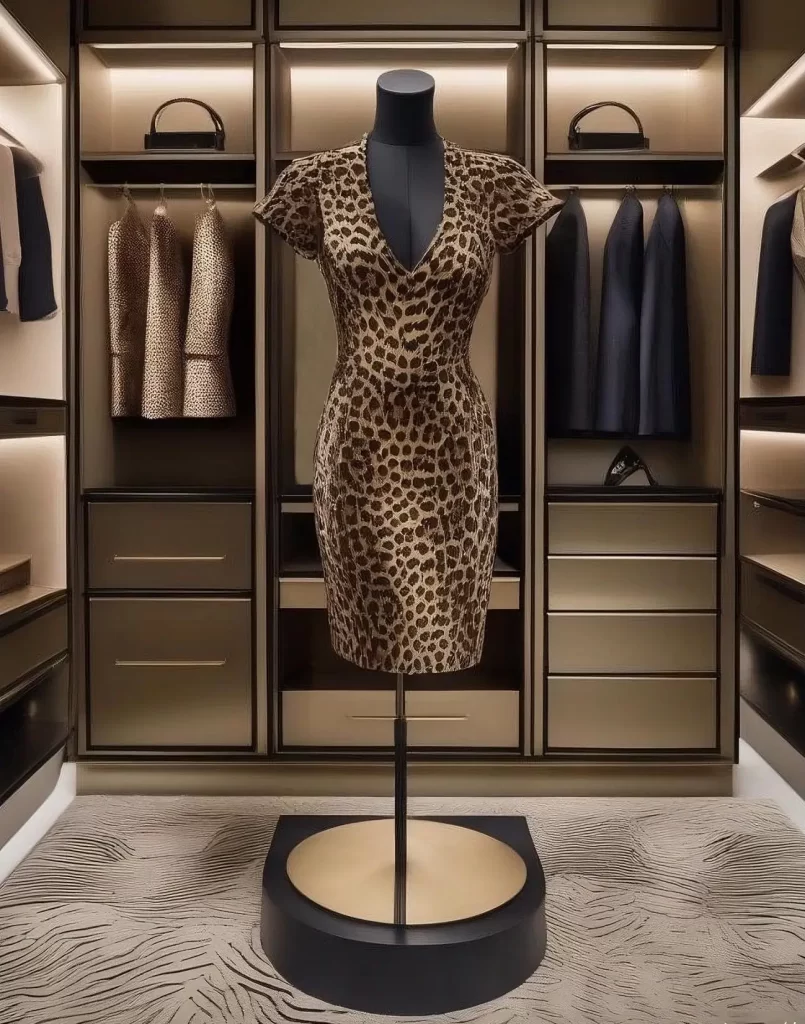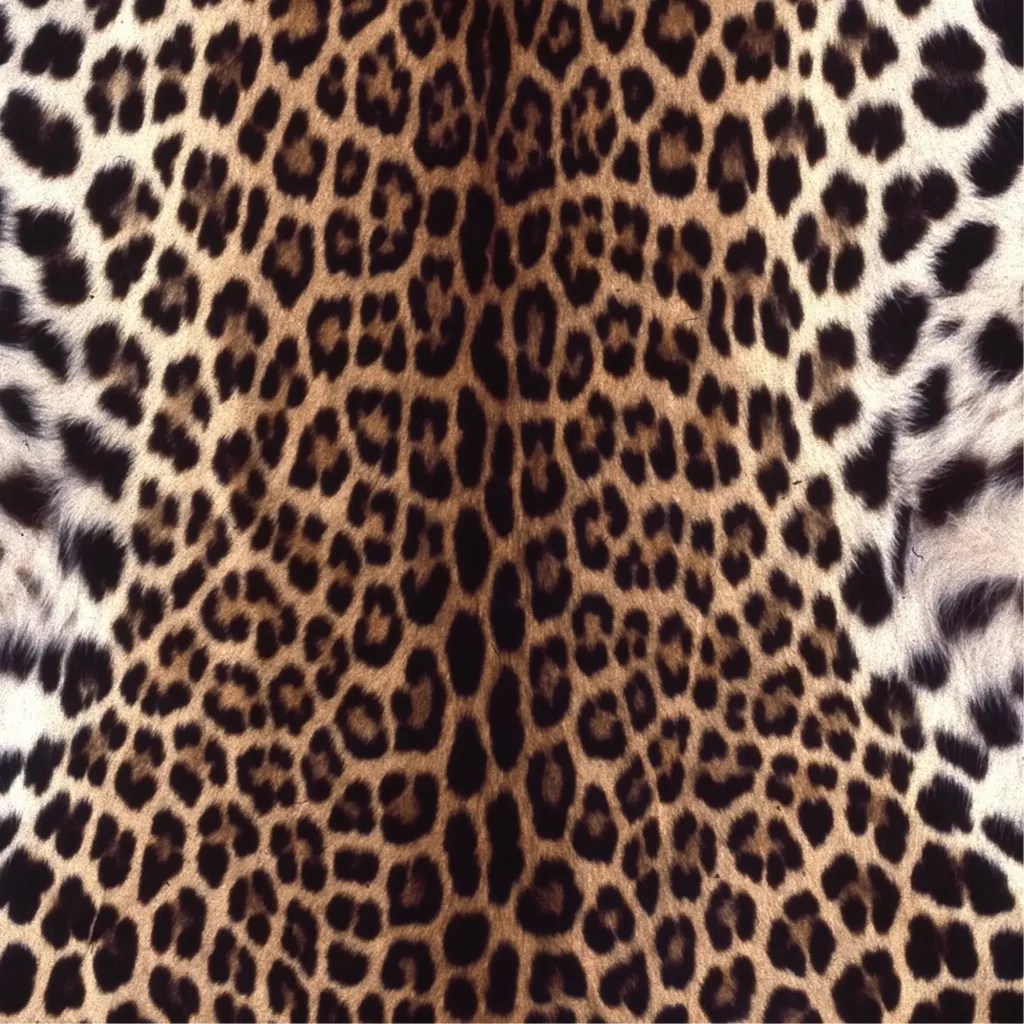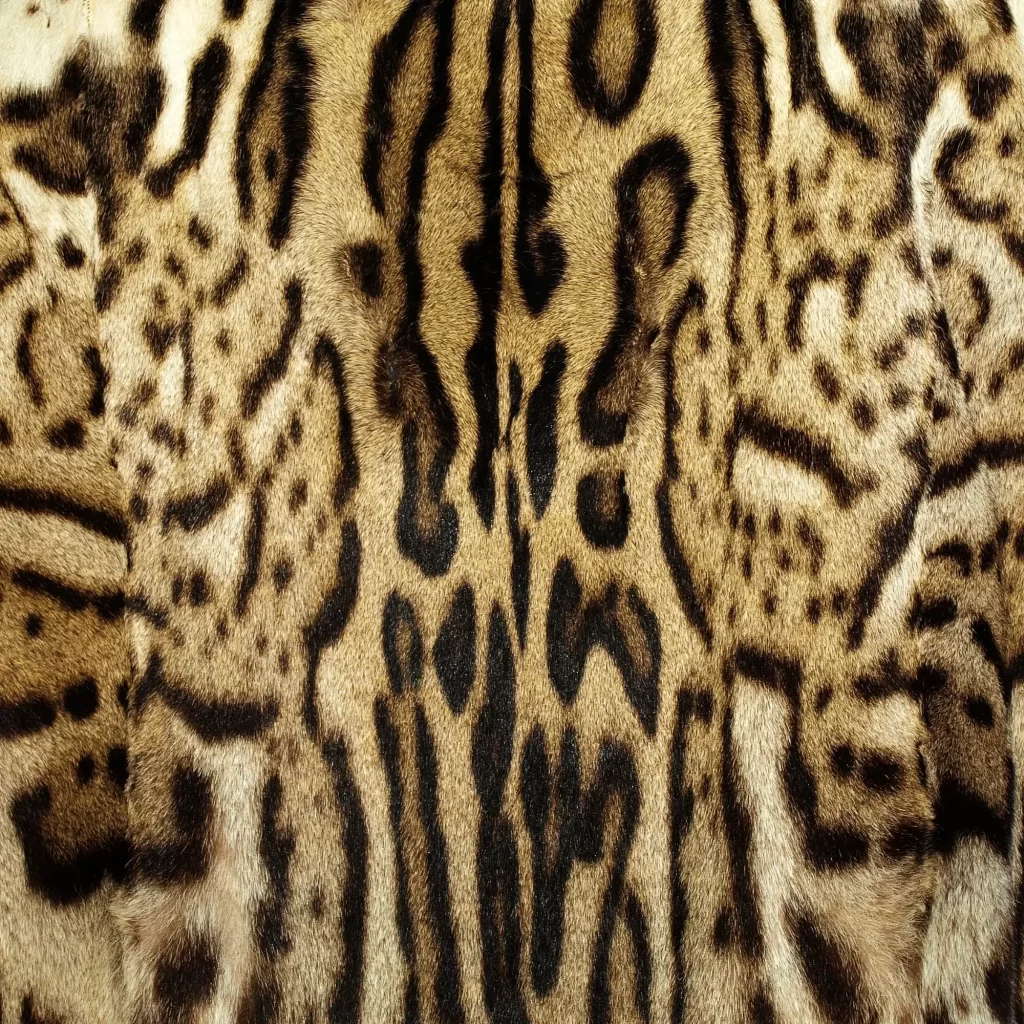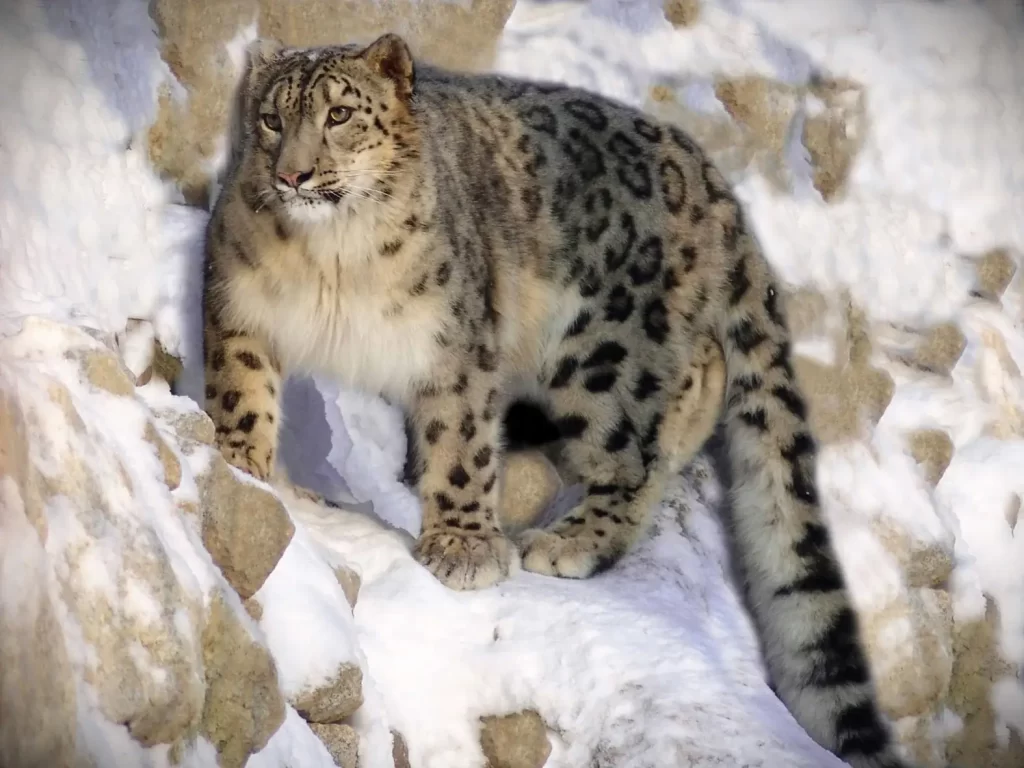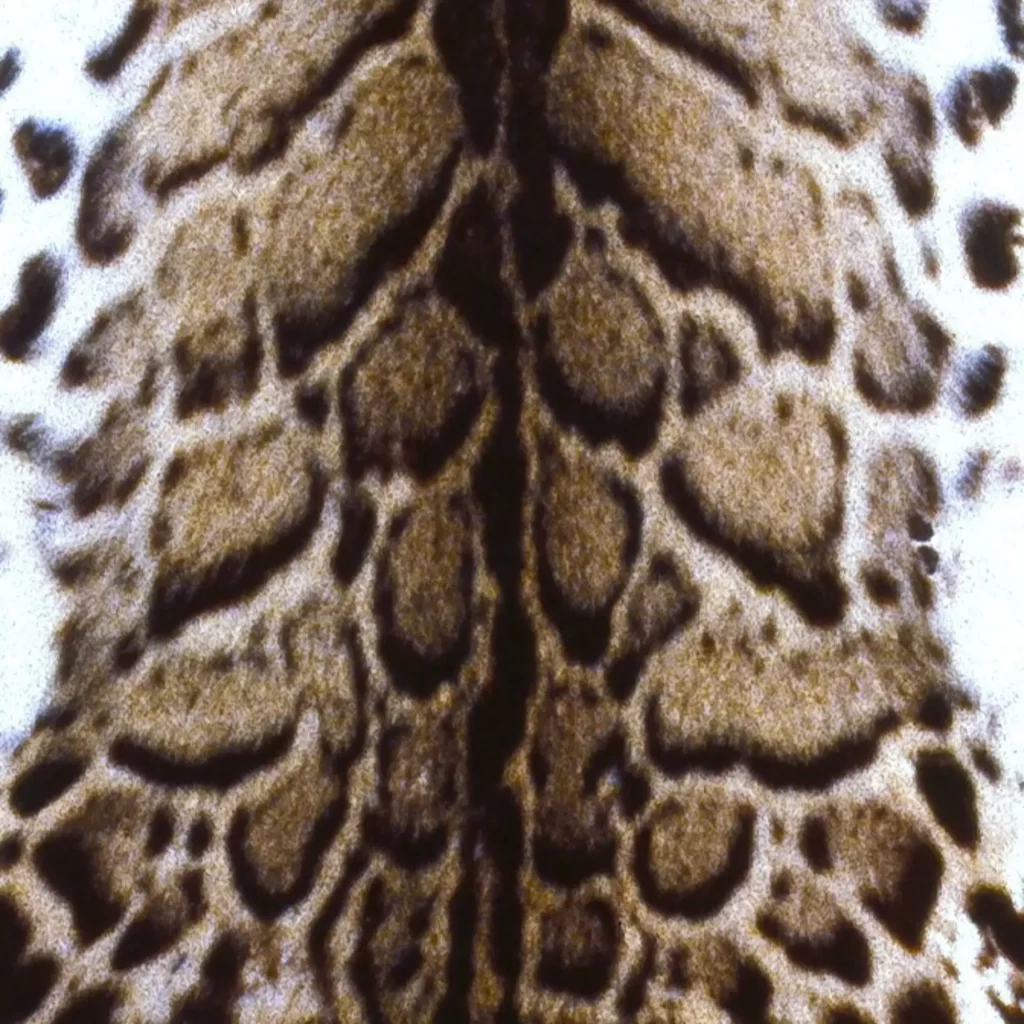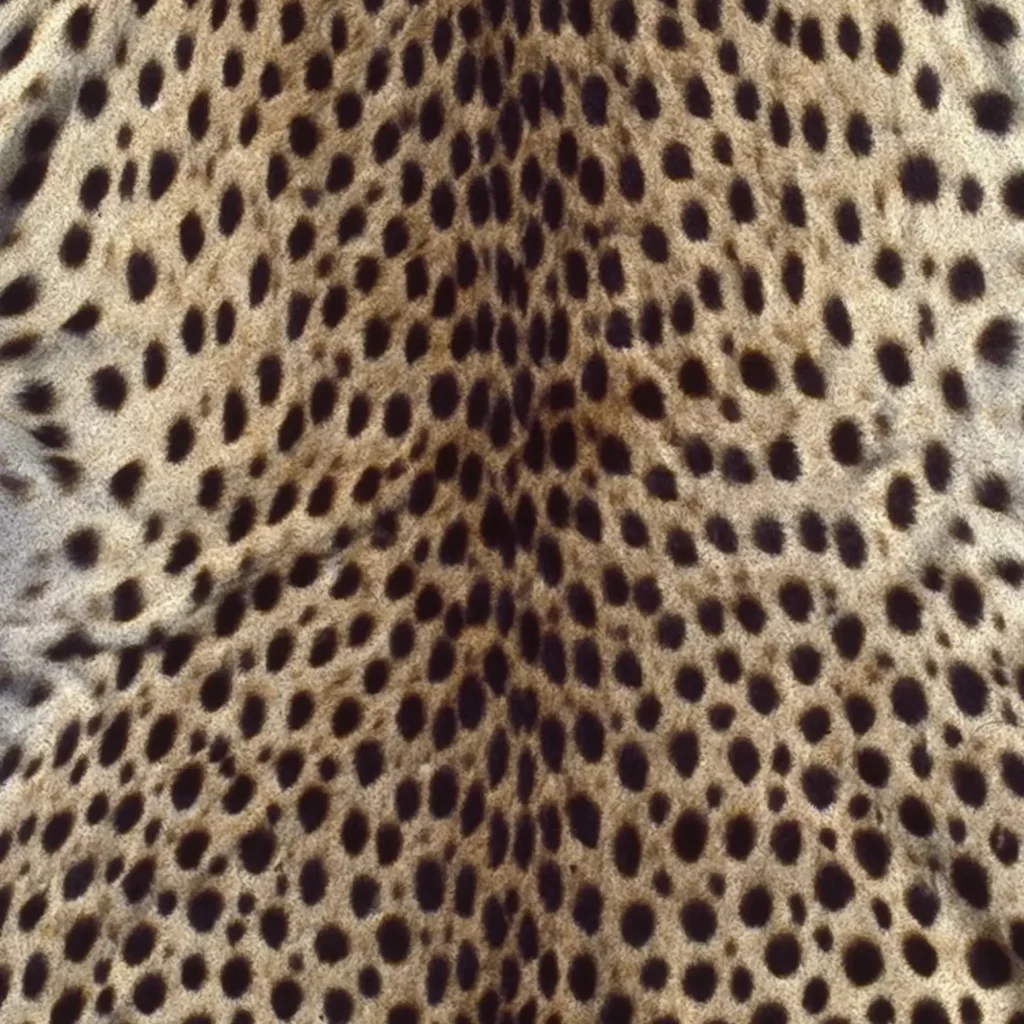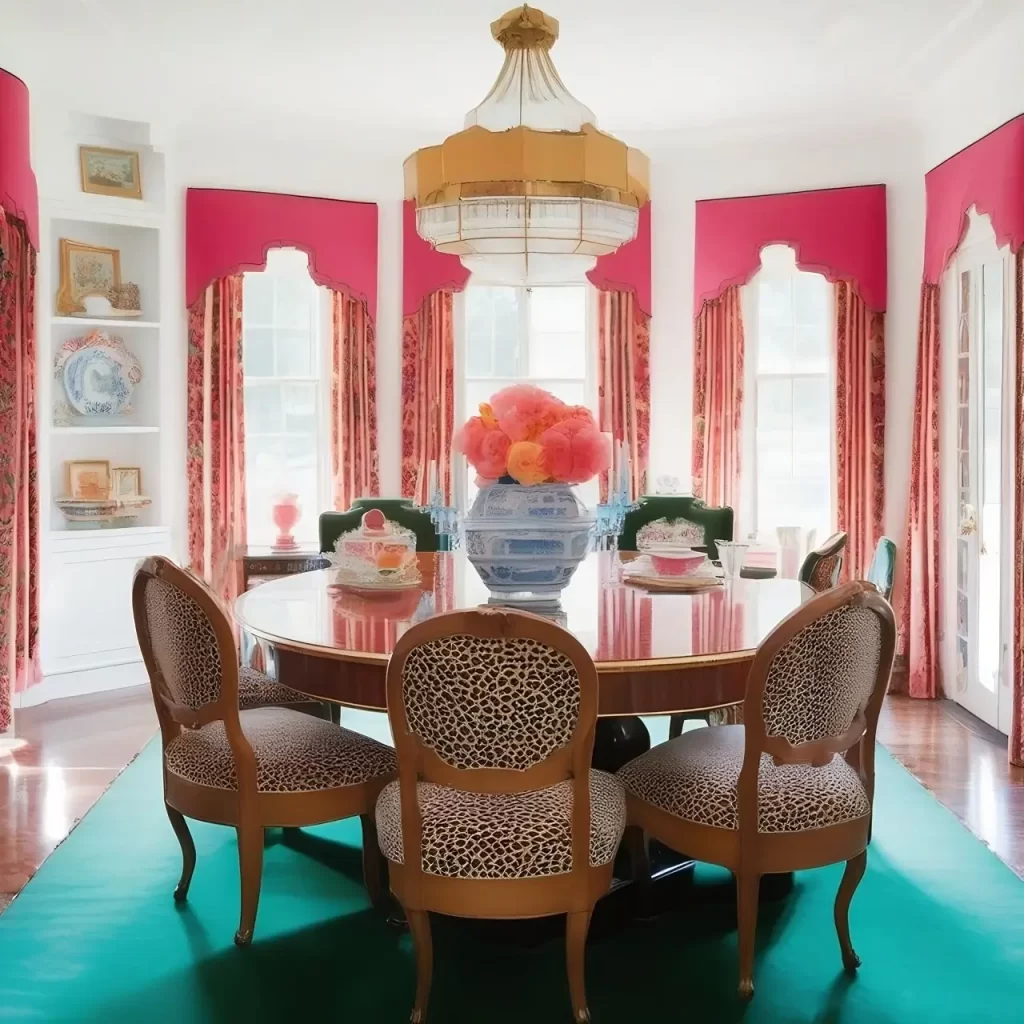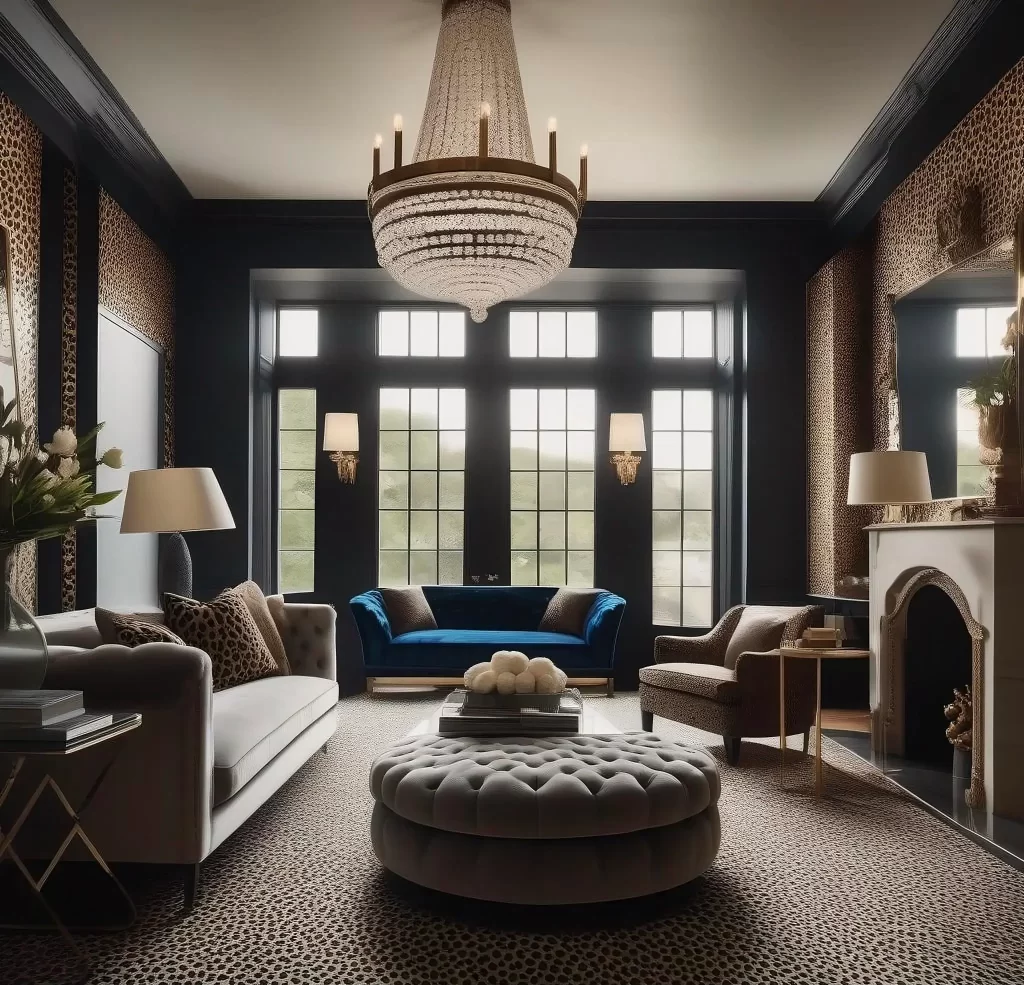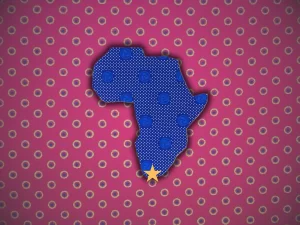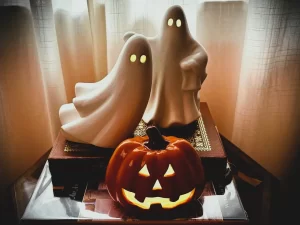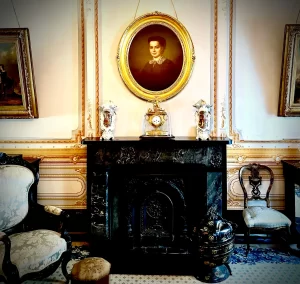In today’s “Pattern Recognition” post, we’re going to take a walk on the wild side by examining a persistent interior design favorite: leopard print!
With perennial appeal, leopard print has long been a popular choice for those who seek to make a bold and daring statement—and not just the flamboyant “Peg Bundy” types, either! This distinctive pattern has a rich heritage that bucks trends. It’s a symbol of confidence and power with an allure extending far back through history, where it has adorned the garments and homes of nobility and esteemed tribal elders since time immemorial.
But what is the origin of this popular pattern and how can we tell it apart from similar patterns that try to pass off as “leopard”? Let’s find out!
I Am Leopard, Hear Me Roar
Leopard print emulates the distinctively patterned coat of the leopard, Panthera pardus. Coming from an animal hide, it would have been among the first “fashionable” patterns to have ever existed.
Leopards In Nature
Renowned for its agility and striking appearance, the cosmopolitan leopard roams across a vast geographic range that spans from the dense forests of Asia to the arid landscapes of sub-Saharan Africa and the Middle East. Yet despite its adaptability and widespread presence, this majestic species faces significant threats, with habitat loss, poaching, and human-wildlife conflict contributing to its vulnerable status.

Distinguished by their slender build and distinctive coat, leopards showcase remarkable biological adaptations that contribute to their prowess as predators. They are largely ambush predators, relying on stealth and cunning to capture prey. Their coats, adorned with spots arranged in round patterns called rosettes, provide effective camouflage amid the dappled light of their natural habitats. The spots also break up the hunting leopard’s outline, rendering it nearly invisible as it stalks through the grass. This camouflage, combined with their remarkable agility, allows leopards to approach prey with remarkable precision before launching a lightning-fast attack.
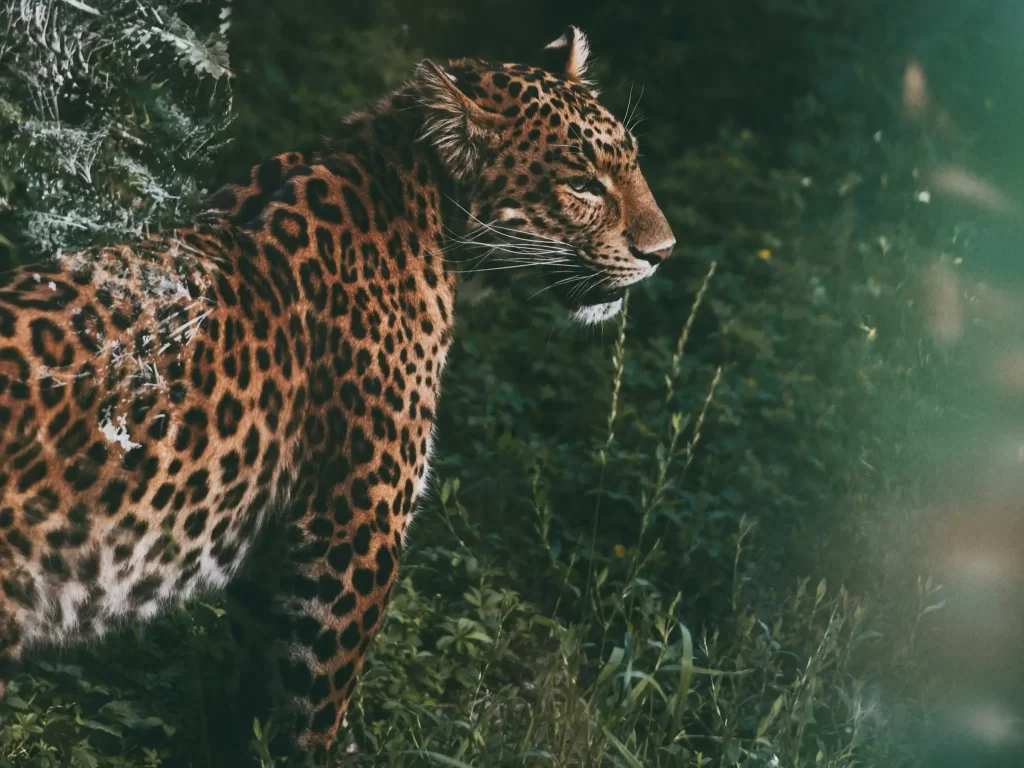
Leopards in Culture
Their fearsome nature and predatory skills have garnered leopards a distinct place in human culture, symbolizing a blend of power, agility, and unbridled beauty. Leopard skins have long been valued and utilized by different societies and wearing them was often reserved for individuals of high status, symbolizing strength and nobility.
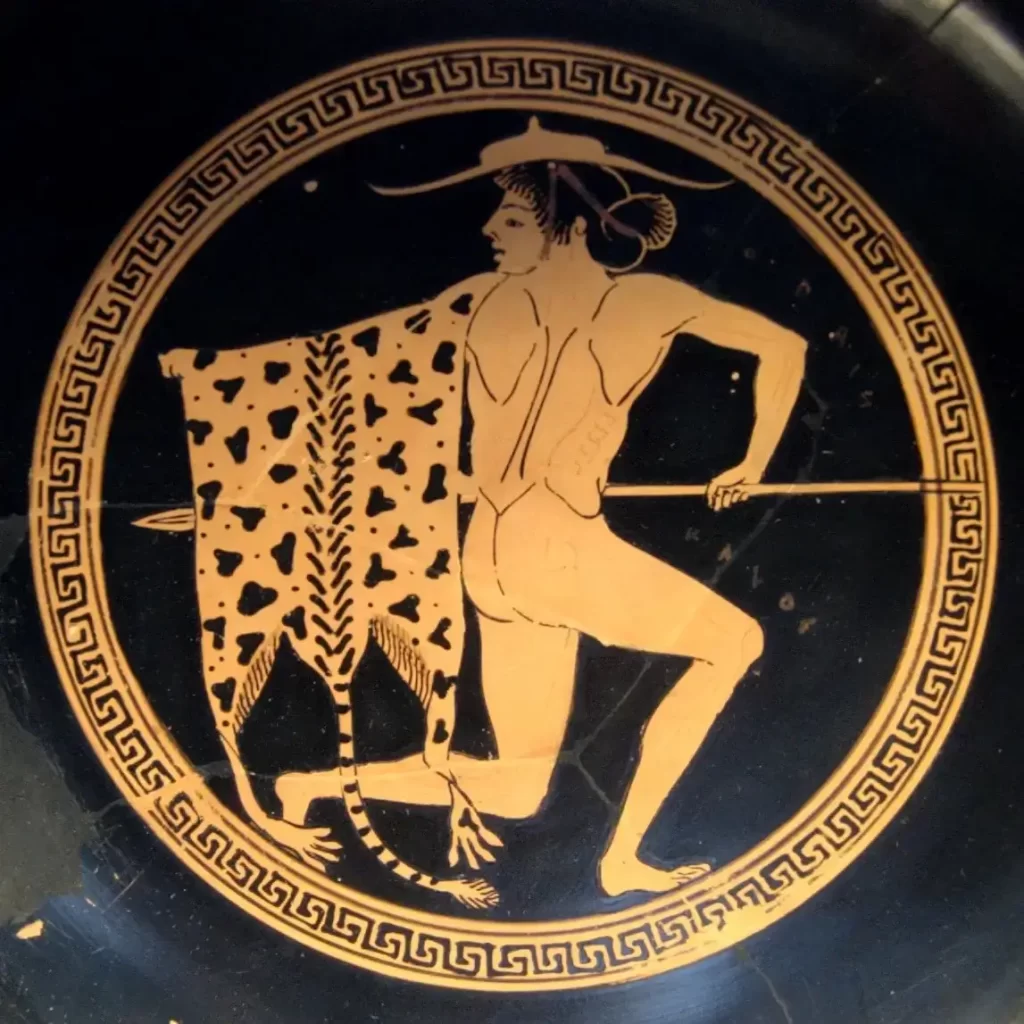
For example, the leaders of the Sotho and Khoi peoples of Southern Africa would often wear a kaross of leopard’s skin in the past, before these were replaced by the Western blanket in the 19th century. Further north on the continent, and closer to our time, the flamboyant and ruthless Congolese dictator Mobutu Sese Seko donned a leopard skin cap as a sort of crown to symbolize his autocratic rule over that country.

Today, the practice of using real leopard skins faces worthy criticism due to conservation concerns, leading to a shift towards leopard print fabrics. Leopard print serves as a symbolic representation of the leopard’s regal qualities, allowing us to embrace a touch of the wild both in fashion and interior design without contributing to the harm of these magnificent beasts.
Leopards Can’t Change Their Spots
Well, can a leopard change its spots? This well-know expression originates from Jeremiah 13:23 in the Bible, emphasizing the enduring nature of a person’s true character. The phrase underscores the idea that certain traits or behaviors are innate and very stubborn.
A leopard’s spots are a leopard’s spots, but just as the spotted coat of the Axis deer is often misnamed as “antelope”, various cat coat patterns are soften wrongly labeled “leopard.”
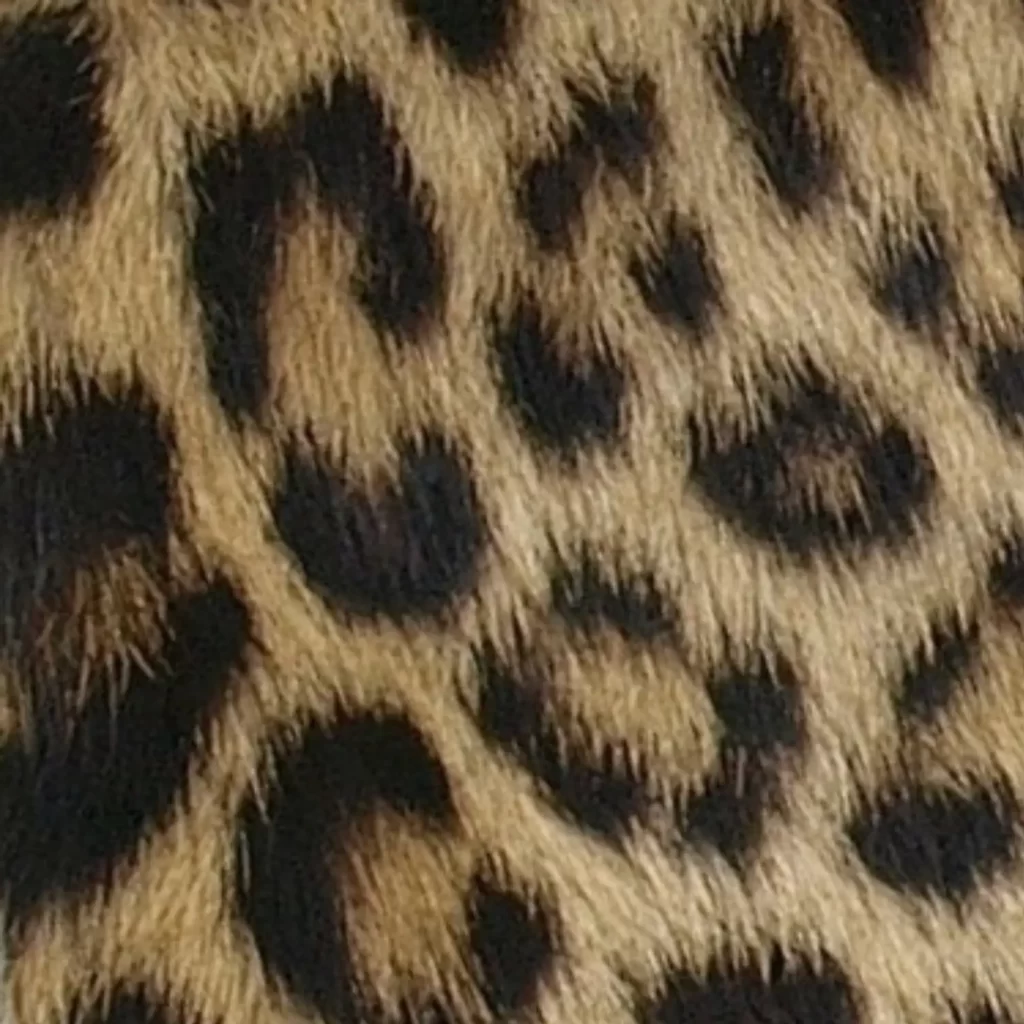
Jaguars, snow leopards, ocelots, and cheetahs are all charismatic cats which feature spotted patterns on their coats. Even lions have spots (although they are fainter and much more visible on cubs). So, how can one tell the difference?
Unfortunately, wild cat patterns can be easily confused to the unsophisticated eye. In fact, too many products are mistakenly sold on the market as “leopard print” when in fact they represent a different animal. This is not a terrible inconvenience if one simply wants to incorporate a wild pattern. But if you are trying to accurately decorate a home with, say, African inspiration, then it’s best to get the details right.
Spotting The Difference
Let’s look at several cat patterns in turn to tell their differences.
JAGUAR
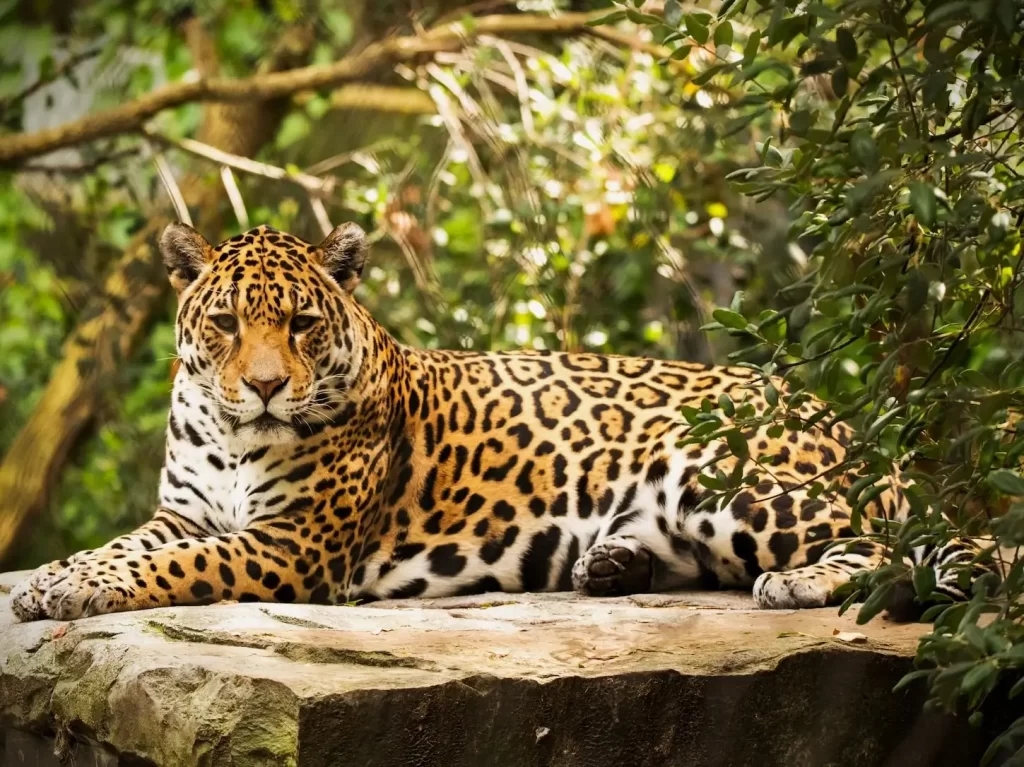
The jaguar (Panthera onca) is a large New World cat that appears very similar to, and is often mistaken for, the leopard. However, aside from not even living on the same continents, jaguars are much more robust and muscular than leopards. To correlate with their sturdier form, jaguars have larger rosettes on their fur compared to the smaller and more closely-spaced rosettes of leopards. Jaguars also often feature one or several dots in the center of each rosette. These beautiful cats live in North, Central, and South America. They once roamed widely across the Southwestern United States, but were extirpated almost complete from this country. However, they have recently been sighted venturing into southern Arizona.
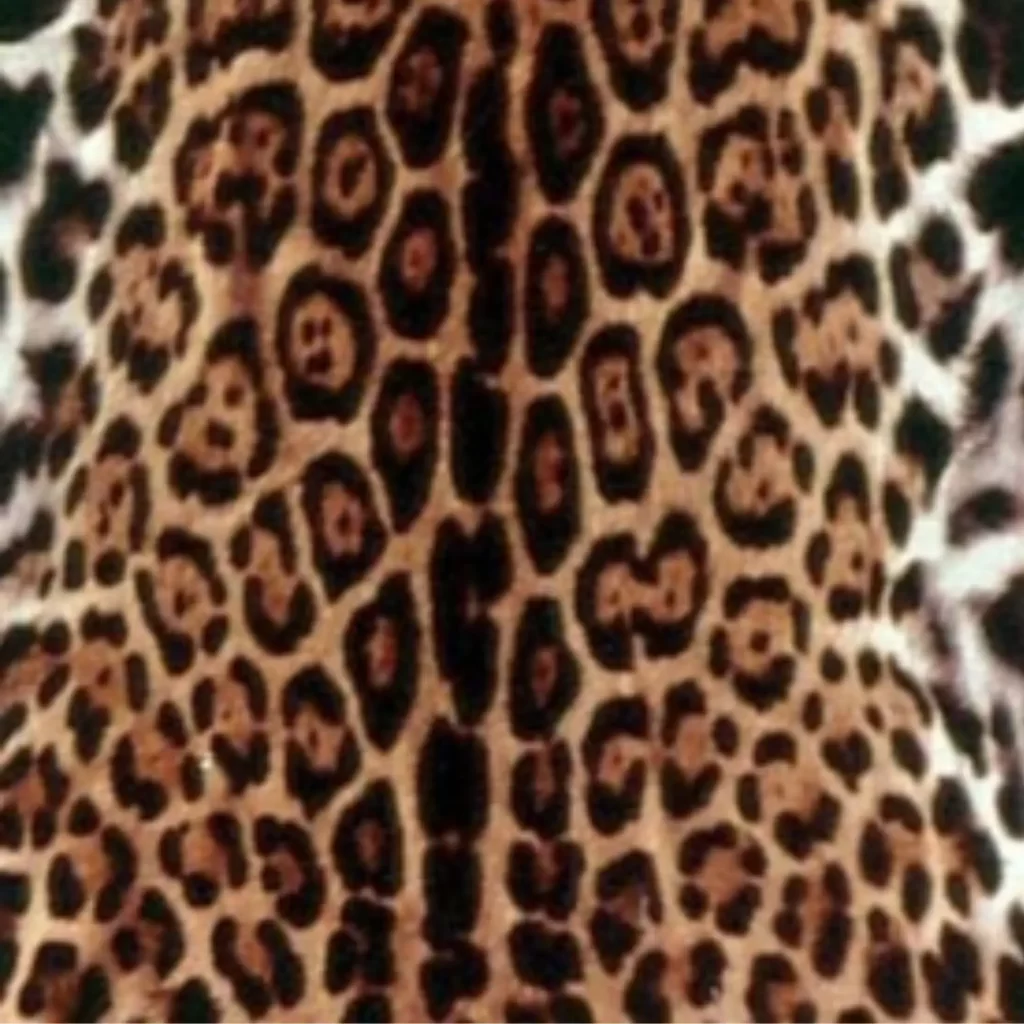
OCELOT
The ocelot (Leopardus pardalis) is a small New World cat that, like the jaguar, has historically ranged from the Southwestern United States to South America. A small remnant population still exists in far South Texas. On the ocelot (Leopardus pardalis) the rosettes are more vivid and appear to be stretched out lengthwise along the body, creating long streaks and stripes. They can also feature slight swirls or numerous dots within the rosettes.
SNOW LEOPARD
Due to the cold, mountainous habitat in which they reside, snow leopards (Panthera uncia) have much shaggier coats that give their rosettes a less defined and yet more closed appearance compared to leopards. A snow leopard’s rosettes also appear gray and black, as opposed to brown and black for leopards. Despite both being in the same genus and referred to as leopards, snow leopards are not true leopards and are in fact more closely related to the striped tigers!
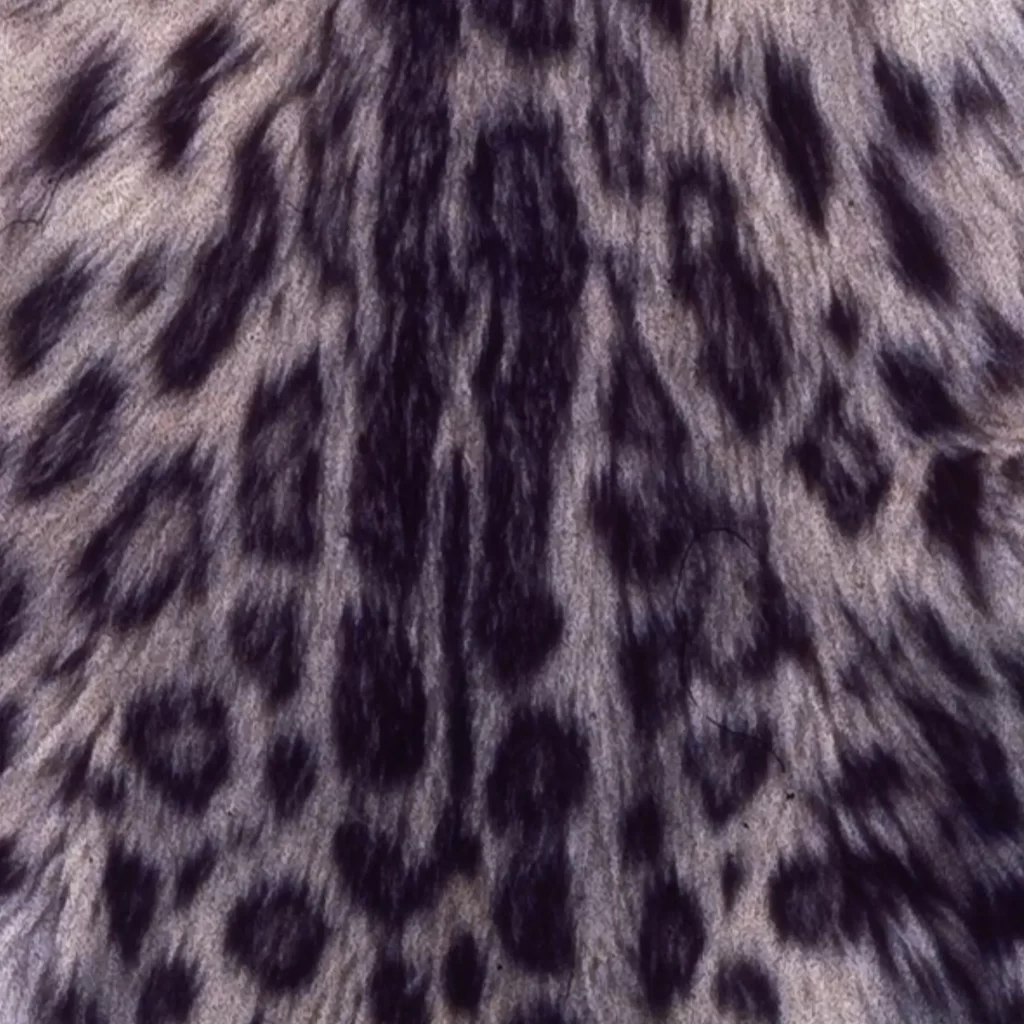
CLOUDED LEOPARD
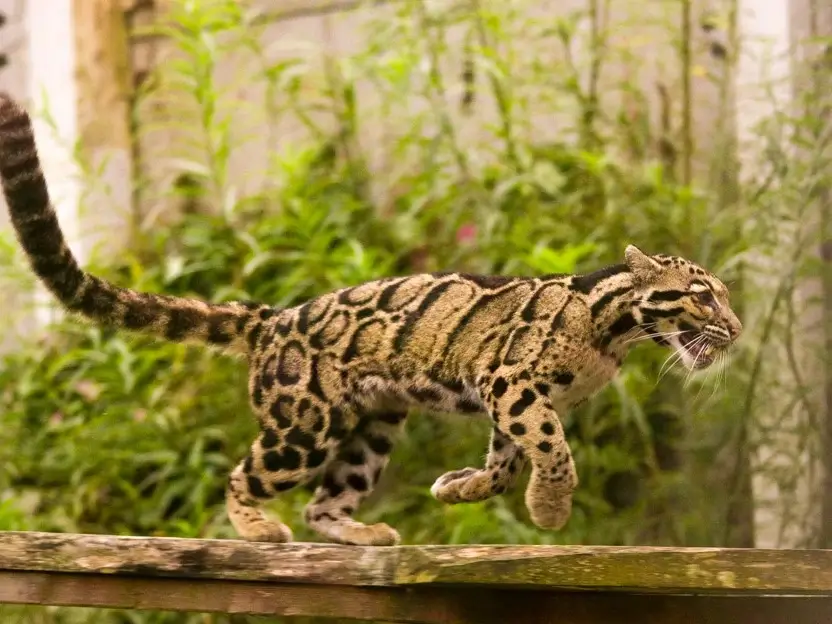
The clouded leopard (Neofelis sp.) is a beautiful, agile animal that inhabits the tropical forests of Southeast Asia. As with snow leopards, clouded leopards are not true leopards and in fact form a sister group to the Panthera. Also, like snow leopards, the coloration of clouded leopards is a tawny grey with black rosettes. The large rosettes of these cats have a nebulous appearance, which gives them their name. Some margins are thick and black, while the other margins tend to fade into grey fog-like clouds.
CHEETAH
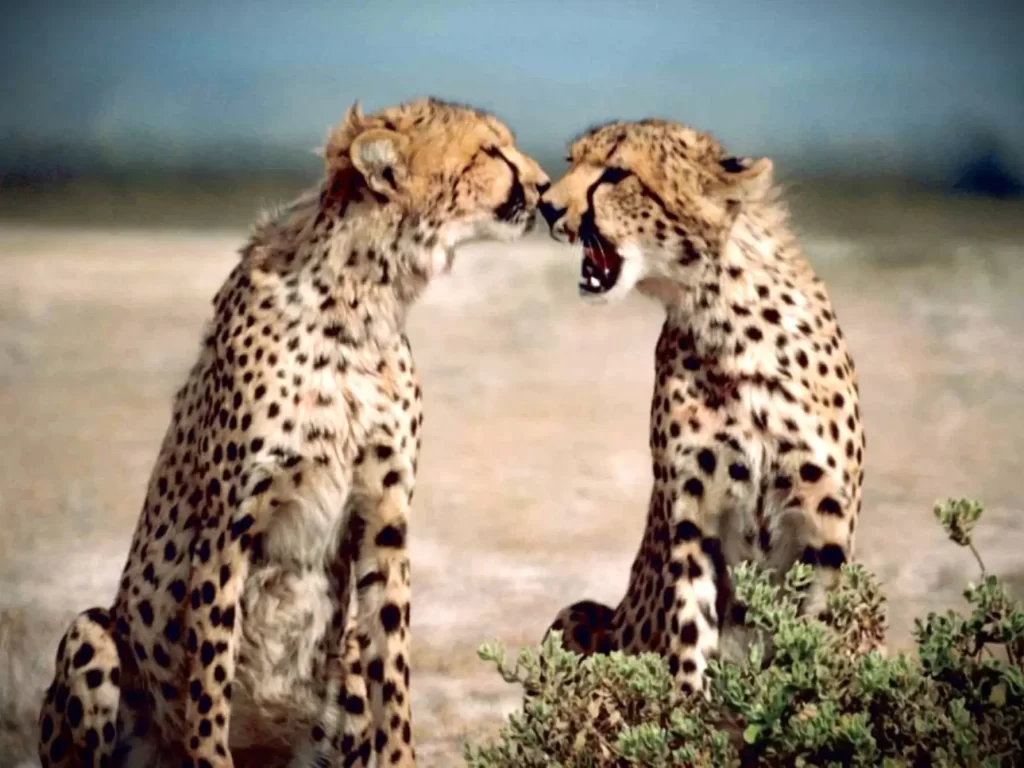
Cheetahs are another African/Asian cat that are often confused for leopards, but are from a completely different lineage. In fact, cheetahs are more closely related to the American cougar. Cheetahs have much sleeker bodies than leopards, with long legs and tails which make them the fastest land mammal on earth! Unlike other cats, cheetahs do not have rosettes but true spots.
How To Use Leopard Print for Interior Design

Leopard print is a versatile interior design pattern that can be used either as a punchy accent, or as a neutral base. It’s truly a pattern for all seasons!
As an Accent
When used as an accent, leopard print adds a wild touch to a space. The image below is a black and white African design accented with grey leopard print pillows.
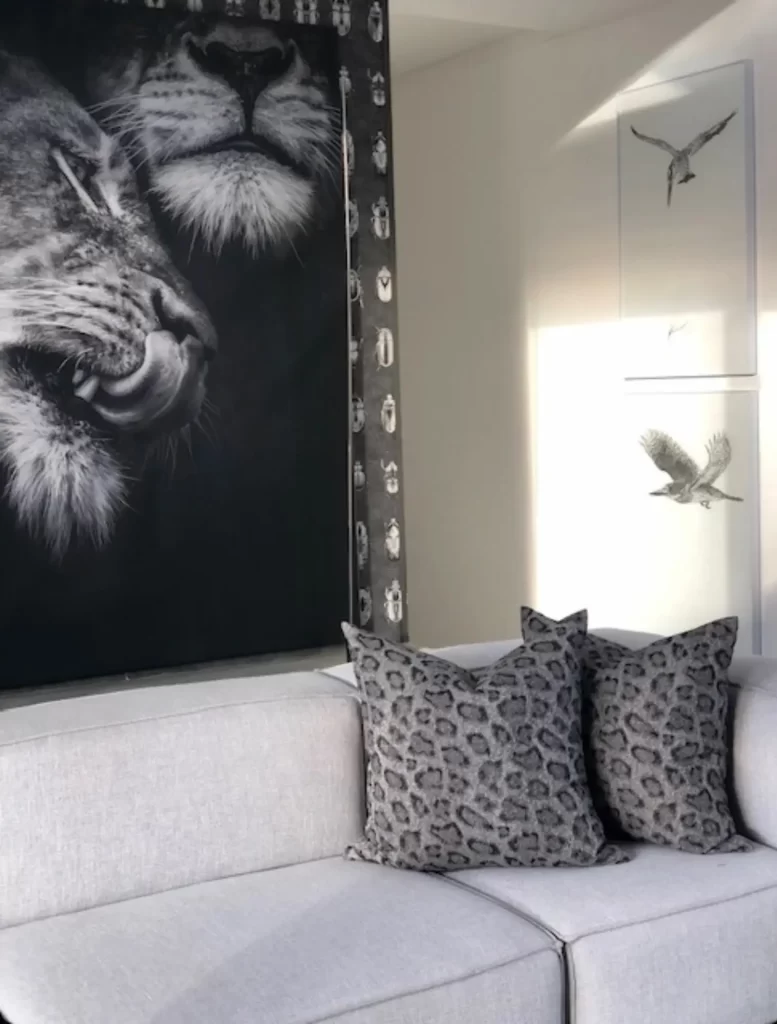
Leopard print also brings a fun, youthful quality to some spaces, such as the bright and colorful dining area below. The colors here are very energizing, as is the more earthy leopard print upholstery on the dining chairs.
As a Base
Despite seeming like a loud pattern, leopard print works especially well as a base layer upon which to build an interior room’s design. Below, a blue leopard print fitted carpet serves as a starting point for soothing bedroom done in tranquil deep blues.
Leopard print can also be applied to walls, either as a wallpaper or fabric, to bring an earthy neutrality as in this living room below. Here, leopard print covers the walls, which are then echoed in some upholstery and a plush cheetah print carpet.
The Lasting Appeal of Leopard Print
Understanding the origin of leopard print allows us to appreciate its authenticity and timeless appeal. The pattern has a fascinating allure rooted in the distinctive coats of real leopards that set it apart from other popular interior design patterns.
The intricate rosette patterns can add a touch of wilderness to interior designs. Delving into the nuances of leopard print, we discover the distinctions between a leopard’s spots and those of other spotted cats. The possibilities for incorporating leopard print into our interiors are as endless and varied as the rosettes of wild cats, themselves.
From subtle accents to bold statements, leopard print provides a versatile canvas for expressing courage and confidence in personal spaces. Embracing this iconic pattern reminds us of the enduring spirit of nature and its regal qualities.



